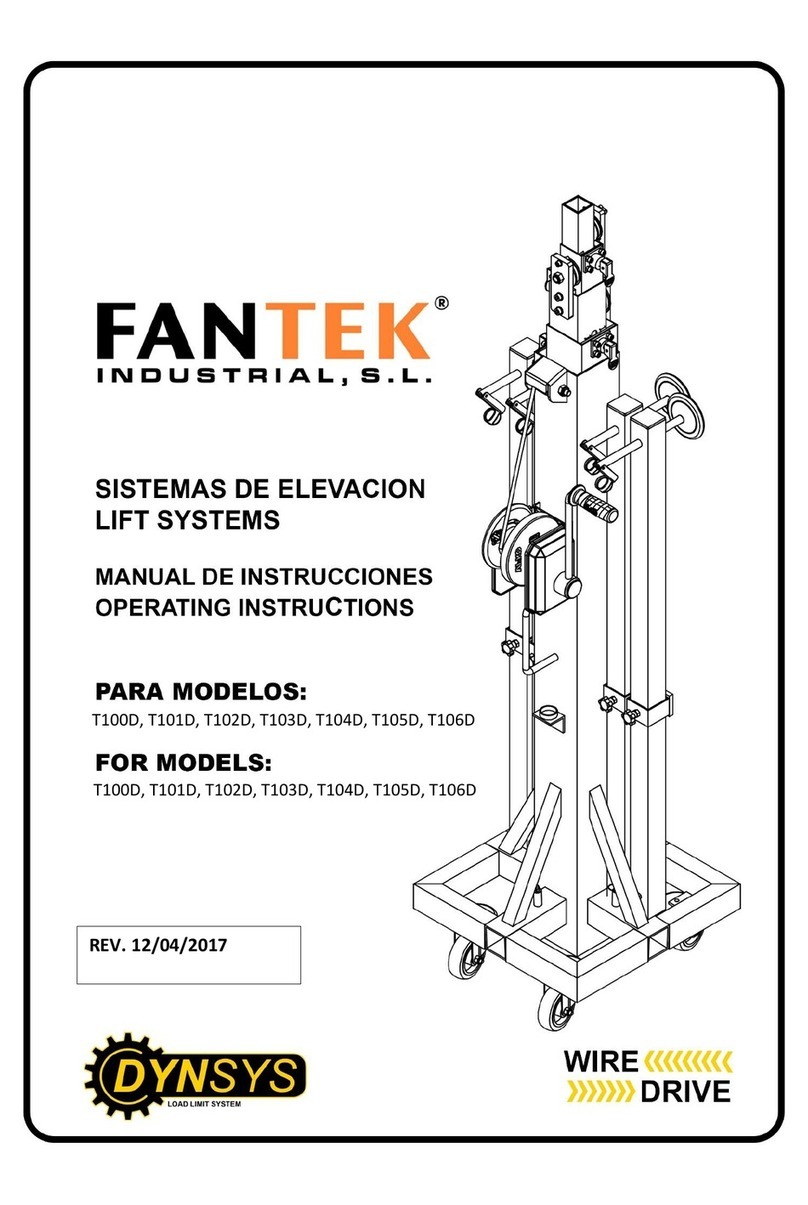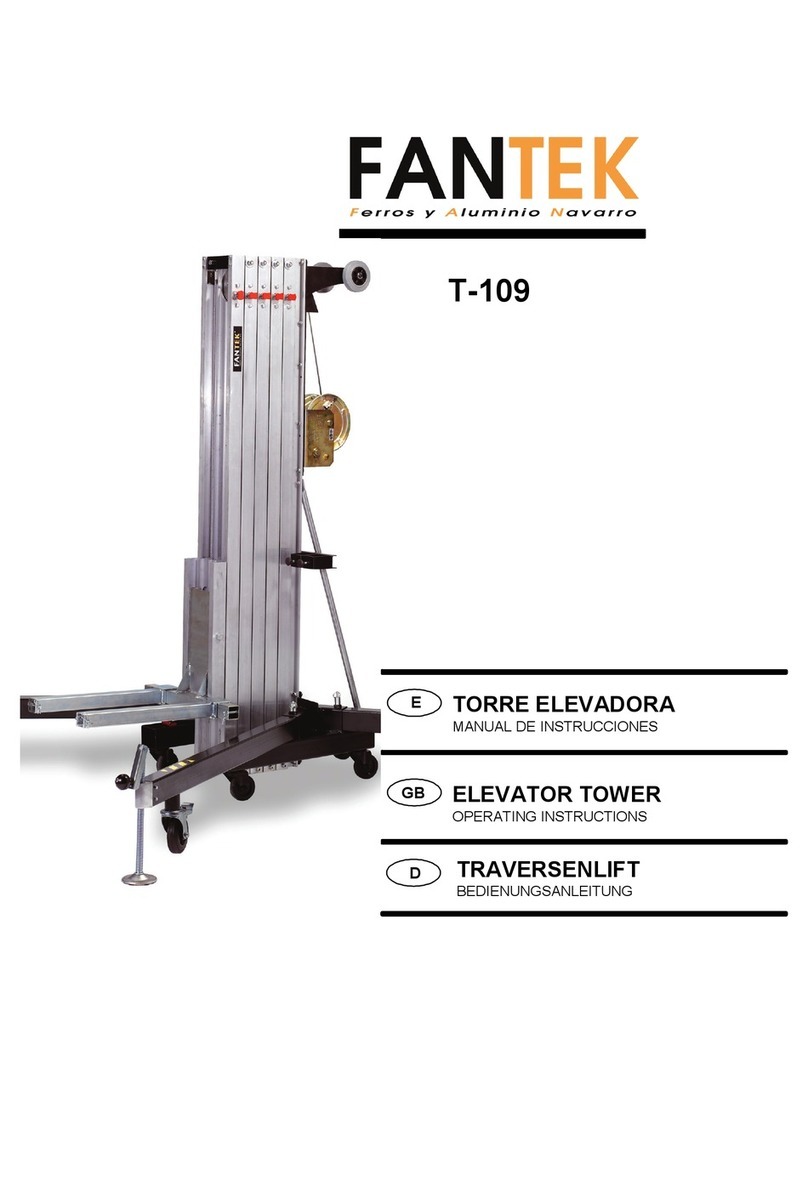3.- Medidas de seguridad.
3.1.- Colocar la torre elevadora sólo en superficies duras y planas.
3.2.- Comprobar que las patas están insertadas a fondo y sujetas por los gatillos
retenedores de seguridad (R).
3.3.- Comprobar que la torre se encuentra en posición vertical mediante el nivel de
burbuja (F) situado en el tramo base. Ajustar, si fuera necesario, con los platillos de
apoyo (Q), girando la manivela (H) en el sentido adecuado.
3.4.- Comprobar que la torre elevadora está bloqueada en la posición de trabajo
mediante los gatillos automáticos de seguridad (M1, M2).
3.5.- Si se utiliza al aire libre, colocar la torre en suelo firme y asegurarla contra la fuerza
del viento mediante tirantes de cable de acero. Los tirantes de cable de acero deben
tener un diámetro mínimo de 4 mm.
3.6.- En caso de ser necesario se deberá conectar la torre a tierra a través del
dispositivo de conexión habilitado para ello, ACC/10.
3.7.- No usar escaleras encima de la torre ni apoyarlas en ella.
3.8.- Cuidado con salientes, cables, etc. Por encima de la torre.
3.9.- No ponerse debajo de la carga.
3.10.- No mover la torre si está cargada o elevada.
3.11.- Antes de utilizar la torre, verificar el estado del cable, éste no debe presentar
rotura de hilos o aplastamiento. No usar nunca cables en malas condiciones.
3.12.- No desmontar nunca la manivela del cabestrante (W), ni ningún elemento del
mismo en ningún caso.
3.13.- Se recomienda fijar la manivela del cabrestante una vez se disponga la torre en
posición de trabajo.
3.14.- La carga mínima para el funcionamiento del freno sin problemas es de 25 Kg. Sin
esta carga mínima el freno no actuará.
3.15.- No engrasar ni lubricar el mecanismo de freno del cabestrante.
3.16.- No autorizada para elevador de personas.
3.17.- Para el transporte hay que bajar todos los tramos y asegurar que queden
bloqueados con los pasadores correspondientes (M1 y M2). También hay que situar las
patas tal y como se especifica en el presente manual, enfrentando los platos
estabilizadores y presionar los platos entre si.

































